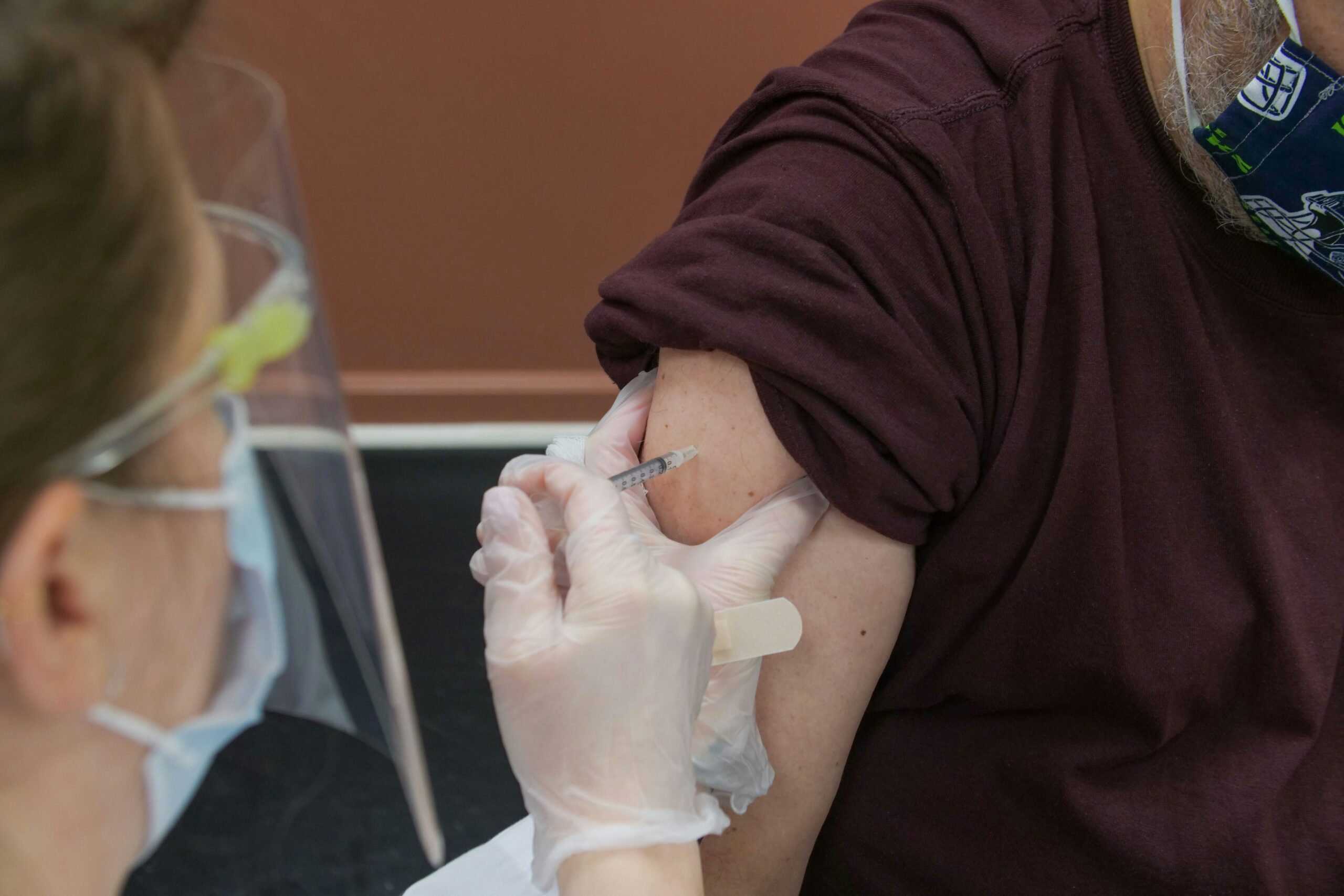Photo by CHUTTERSNAP on Unsplash
Myths about drugs and alcohol abuse often arise from cultural beliefs, media portrayals, and a lack of accurate information. These myths contribute to misunderstandings, stigma, and misinformation about substances, potentially harming individuals and communities.
Addressing these myths is crucial to fostering a more informed and responsible approach to drug and alcohol use.
Here are some popular myths surrounding drugs and alcohol:
Myth 1: Drug and alcohol addiction shows a lack of willpower
This myth revolves around the belief that people with substance use disorders lack self-control. According to this misconception, addiction is solely a result of poor decision-making and moral weakness.
Many believe if the affected person had enough willpower, they could resist the temptation to use substances and quit their addictive behavior.
Fact: Addiction is a complex disease involving changes in the brain.
Substance use disorders are chronic and relapsing conditions that involve significant changes in brain chemistry, rewiring the brain’s reward system and decision-making processes.
Additionally, genetic predisposition, environmental influences, trauma, mental health conditions, and social factors contribute to the development of addiction. These factors make addiction a challenging and complex disease to overcome.
Myth 2: You can’t become addicted to prescription medications.
Some believe that because healthcare professionals legally prescribe medications to treat specific medical conditions, they are all safe and non-addictive. Clinically, a great amount of prescription drugs are non-addictive however some medications have the potential to cause addiction if misused.
This, however, is a dangerous misconception that can lead to serious health consequences.
Fact: Many prescription medications have the potential for abuse and addiction.
A prescription drug is a pharmaceutical drug that is permitted to be dispensed only to those with a medical prescription. When prescription drugs are misused, i.e., taken for too long or taken in larger than prescribed quantities, there is the possibility of developing an addiction. Some prescription medications, like opioids, benzodiazepines, and stimulants, can be easily misused, leading to dependence.
For example, fentanyl, a potent opioid prescribed for severe pain after surgery or injuries, can also cause euphoria, tempting some people to misuse it recreationally. This misuse can quickly lead to addiction, making it hard for patients to quit use even when it harms their health.
Myth 3: Using drugs or alcohol occasionally doesn’t lead to addiction.
Many people believe recreational drug and alcohol use, i.e., from time to time, isn’t harmful. This is mainly a dangerous misconception for individuals who experiment with substances casually.
Fact: Occasional use of drugs or alcohol can lead to addiction over time.
While not everyone who experiments with substances becomes addicted, significant risks are involved. This is because substances like drugs and alcohol can affect the brain’s reward system.
This leads to the release of dopamine which reinforces the desire to use them again. With repeated use, the brain may adapt to these substances, requiring higher doses to achieve the same effects. This phenomenon, known as tolerance, can increase the risk of addiction.
Myth 4: Mixing different types of alcoholic drinks causes more severe intoxication symptoms.
This belief is often based on the assumption that different types of alcohol have varying properties, and mixing them creates a potent concoction. Examples could include mixing beer and wine together or different spirits.
Additionally, some believe combining different kinds of alcohol leads to faster absorption and an accelerated increase in blood alcohol concentration (BAC), resulting in heightened intoxication.
Fact: The type of alcohol consumed does not significantly impact intoxication levels.
Alcohol by volume (AVB) measures the amount of ethanol (alcohol) in a beverage. It is shown as a percentage of the overall alcohol per drink volume. Different alcoholic beverages have different alcohol by volume.
For instance, based on a standard drink of 0.6 ounces; one bottle of beer contains 5% ABV while 8 ounces of malt liquor has 7% ABV, 5 ounces of wine contains 12% ABV and 1.5 ounces of hard liquor, or one shot has 40% ABV. What matters most in determining the level of intoxication is the total amount of alcohol consumed, regardless of whether it comes from beer, wine, spirits, or any other form of alcohol.
The human body metabolizes alcohol at a relatively constant rate, and the liver processes the alcohol at a consistent speed, regardless of the source or form of alcohol.
Myth 5: Opioid addiction only happens to people with a history of drug abuse.
This misconception stems from the belief that addiction is solely a result of a person’s choices and behaviors. Some people think that those addicted to opioids or other substances must have engaged in drug abuse or risky behaviors in the past.
Fact: Opioid addiction can affect anyone, regardless of their past drug use history.
People with a history of drug abuse may have an increased risk of developing opioid addiction. However, most cases of opioid addiction start with legitimate prescription use.
Moreover, genetic predisposition, mental health conditions, environmental influences, and social factors can also contribute to developing opioid addiction in individuals with no history of drug abuse.
Myth 6: Getting professional help for drug or alcohol abuse is for the weak.
Some people believe they can overcome substance abuse through willpower and determination. This includes not getting a professionally supervised detox.
Fact: Without professional help, overcoming substance abuse is often challenging and ineffective
Overcoming drug or alcohol abuse without professional help can be challenging and risky. This is due to the potential development of;
- Severe withdrawal symptoms
- Intense psychological cravings
- Difficulties in identifying and managing triggers for relapse
- The need to address co-occurring mental health disorders, and
- The absence of healthy coping strategies.
Therefore, seeking professional counsel and treatment is essential for a sustainable recovery.
Myth 7: A person can never really recover from addiction.
At times addiction is portrayed as an incurable and lifelong condition. This leads people to believe that once someone becomes addicted, there is no hope for a full recovery.
However, this is a very limiting and harmful belief that can prevent people from seeking help and pursuing a healthier life.
Fact: Addiction is a treatable medical condition, and recovery is possible
With proper treatment, recovery from addiction is very attainable. Many people successfully overcome addiction and lead fulfilling and substance-free lives.
Addiction recovery involves various approaches, such as counseling, behavioral therapies, support groups, medication-assisted treatment, and holistic interventions.
The recovery process may not be linear, and setbacks may occur. Still, people can navigate these challenges with determination and support and continue progressing toward sobriety.
Myth 8: Addiction is completely cured after people are done with rehab.
Some believe that completing a rehabilitation program is a definitive and permanent solution to addiction. This assumes that once rehab is over, individuals will no longer face any challenges related to substance use.
This, however, is a misconception that can lead to unrealistic expectations and potential relapse.
Fact: Addiction recovery is a journey; after rehab, aftercare helps ensure sobriety.
While rehab can be a critical step in recovery, aftercare should be provided to aid recovery. Addiction is a chronic condition that alters the brain’s functioning, and recovery requires ongoing effort and commitment to maintaining sobriety.
Completing a rehab program provides individuals with essential tools and healthy coping strategies to address their addiction. Aftercare support, sobriety support groups, and removing environmental and individual triggers can help maintain recovery.
Myth 9: High-functioning individuals can’t have a drug or alcohol problem.
This misconception stems from the belief that addiction only affects those who exhibit visible signs of impairment in their personal and professional lives. Some assume that people who maintain successful careers, have stable relationships, and seem to have their “lives together” cannot possibly live with substance abuse.
Fact: Addiction affects people from all walks of life, regardless of external achievements.
High-functioning individuals may be adept at hiding their substance use from others, leading to the misconception that they do not have a drug or alcohol problem. Despite being productive, individuals can face significant internal struggles related to substance abuse.
They may use drugs or alcohol to cope with stress, anxiety, or other underlying emotional issues.
Myth 10: Treatment for drug or alcohol abuse is a one-size-fits-all approach.
Many people erroneously believe that everybody with substance use disorders can be effectively treated with the same methods and interventions, as they assume addiction treatment follows a standardized protocol that works for everyone.
Fact: Effective addiction treatment requires a personalized approach.
Treatment options for drug or alcohol abuse are diverse and tailored to suit the needs of each patient. They are also comprehensive and multidimensional, addressing not only the physical aspects of addiction but also the psychological, emotional, and social aspects.
Substance use treatment should be based on evidence-based practices and consider each individual’s medical history, substance use patterns, co-occurring disorders, and personal preferences.




